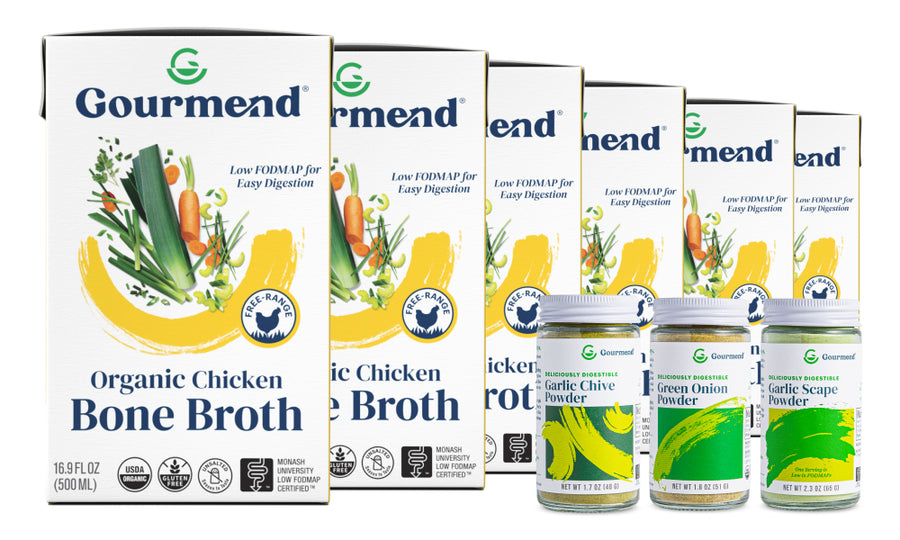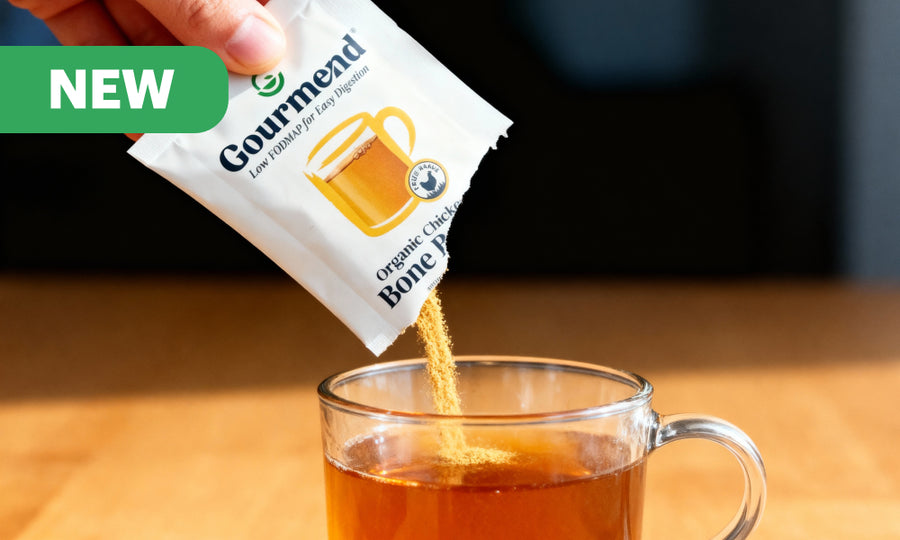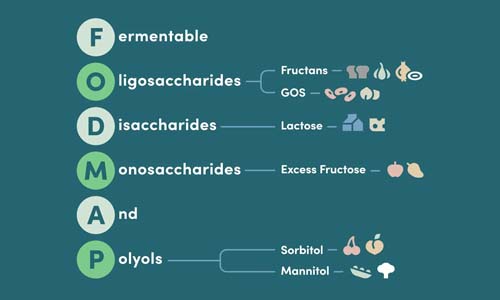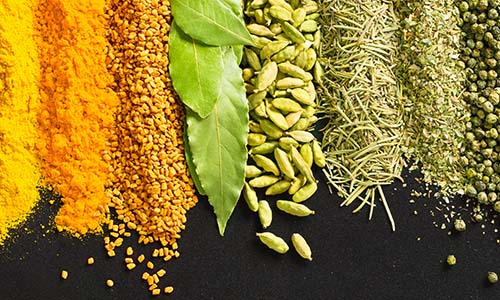Is Orange Juice Low FODMAP? Your Complete Guide
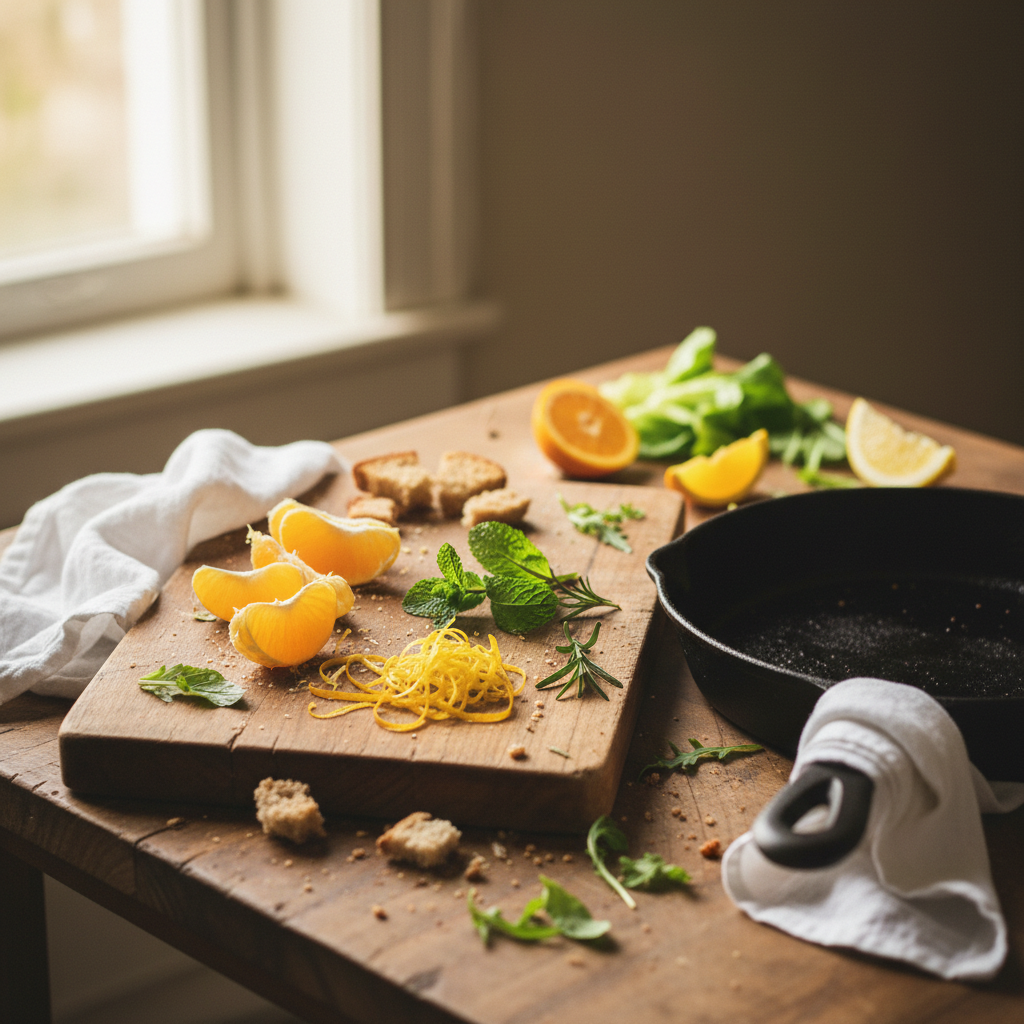
Key Takeaways
- Orange juice is generally considered low FODMAP and can be included in a low FODMAP diet.
- Managing IBS symptoms with orange juice requires attention to portion sizes and individual tolerance.
- The vitamin C and bright flavor of orange juice make it a popular, beneficial choice for many.
- Details about how orange juice fits into a low FODMAP diet are important for effective symptom management.
Table of Contents
Is Orange Juice Low FODMAP? Your Complete Guide
That morning glass of orange juice, beloved for its vitamin C boost and bright flavor, doesn't have to be off-limits when you're managing IBS or following a low FODMAP diet. The answer to is orange juice low FODMAP is yes, but the details matter more than you might think.
If you're looking to stock your kitchen with safe, gut-friendly staples, consider starting with a Low FODMAP Pantry Starter Bundle or the Low FODMAP Foodie Bundle, both are curated to help you maintain a low FODMAP lifestyle beyond just beverages.
What Makes Orange Juice Low FODMAP (or Not)?
The FODMAP Factor in Fruit Juices
Orange juice's FODMAP profile centers on excess fructose, the fermentable sugar that can overwhelm your gut's absorption capacity and trigger bloating, gas, and discomfort. Unlike whole oranges, juice concentrates these sugars without the fiber buffer that normally slows absorption.
Monash University testing confirms that fresh-squeezed orange juice remains low FODMAP up to 120 ml, but jumps to moderate FODMAP at 200 ml. This isn't arbitrary, it reflects the precise point where fructose load exceeds what most sensitive guts can handle comfortably.
Fresh-Squeezed vs. Reconstituted: A Critical Distinction
Fresh-squeezed juice offers the cleanest FODMAP profile because you control every ingredient. Reconstituted juice (from concentrate) carries the same 120 ml low FODMAP serving but often includes "natural flavors" or juice blends that can introduce hidden FODMAPs from high-fructose fruits like apple or pear.
Processing methods also matter. Concentration can slightly increase fructose density, and some manufacturers add back ingredients that weren't in the original fruit. Always verify that the label reads "100% orange juice" rather than "orange juice blend."
Serving Size Is Everything
The 120 ml threshold isn't just a guideline, it's your digestive safety net. A standard 8 oz glass doubles this serving and pushes you into moderate FODMAP territory, where symptoms become more likely.
Think of orange juice as a flavor accent rather than a beverage to chug. Use a small juice glass or measure with a ¼-cup doubled. This portion delivers meaningful vitamin C (about 70 mg) and bright citrus flavor without overwhelming your gut's fructose processing capacity.
How to Choose Low FODMAP Orange Juice at the Store

Label-Reading Essentials: Red Flags to Avoid
High fructose corn syrup tops the avoid-at-all-costs list, it's a concentrated FODMAP bomb that will trigger symptoms regardless of serving size. Similarly, watch for blends containing apple, pear, mango, or pomegranate juice, all of which are high FODMAP fruits that compromise an otherwise safe orange juice.
Sugar alcohols like sorbitol, mannitol, and xylitol often hide behind "natural flavors" in diet or reduced-sugar varieties. "Juice cocktail" or "juice drink" labels typically signal added sugars and fillers. Stick with products labeled "100% juice" for the cleanest ingredient profile.
Low FODMAP-Friendly Ingredients to Look For
The gold standard ingredient list reads simply: "pasteurized orange juice" or "100% orange juice." Calcium fortification adds nutritional value without FODMAPs, and "not from concentrate" typically correlates with fewer processing additives.
Cold-pressed or fresh-squeezed labels, while sometimes marketing terms, often indicate minimal processing and cleaner ingredient profiles. Flash pasteurization preserves both safety and FODMAP levels without the heavy processing that can introduce problematic additives.
| Juice Type | Serving Size | Low FODMAP? | Notes |
|---|---|---|---|
| Fresh-squeezed (home) | 120 ml (½ cup) | ✅ Yes | Safest option; no hidden ingredients |
| 100% OJ, not from concentrate | 120 ml | ✅ Yes | Check label for blends |
| Reconstituted (from concentrate) | 120 ml | ✅ Yes | Safe at this serving; moderate at 160 ml |
| OJ blend (apple, pear added) | Any | ❌ No | High FODMAP fruits; avoid |
Best Low FODMAP Orange Juice Brands
Simply Orange (original, no added ingredients) and Tropicana Pure Premium (not from concentrate) consistently deliver clean ingredient profiles with just pasteurized orange juice. Minute Maid Premium Original offers another reliable option, though always verify the specific variety since brands often have multiple product lines with different formulations.
Fresh-squeezed options from grocery store produce sections often provide the cleanest choice, but ask about preservatives. Small, local cold-pressed juice bars typically offer the purest option, just confirm they add nothing beyond oranges to their juice.
| Juice Type | Serving Size | Low FODMAP Status | Key Considerations |
|---|---|---|---|
| Fresh-squeezed (home) | 120 ml (½ cup) | ✅ Yes | Safest option; complete ingredient control |
| 100% OJ, not from concentrate | 120 ml | ✅ Yes | Verify no fruit blends on label |
| Reconstituted (from concentrate) | 120 ml | ✅ Yes | Safe at this serving; moderate at 160 ml |
| OJ blend (apple, pear added) | Any amount | ❌ No | High FODMAP fruits; avoid completely |
| OJ with HFCS or sugar alcohols | Any amount | ❌ No | FODMAP triggers; skip entirely |
For those who want to expand their low FODMAP options beyond juice, Low FODMAP Taco Seasoning and Organic Chicken Bone Broth | Low FODMAP & Unsalted are excellent pantry additions for flavorful, gut-friendly meals.
How to Make Low FODMAP Orange Juice at Home
Why Homemade Is the Gold Standard
Fresh-squeezed juice gives you complete ingredient control, just oranges, no hidden additives or processing variables. You capture peak vitamin C content without the oxidation that occurs during commercial storage, and bulk oranges often cost less per serving than premium store brands.
Customization becomes effortless when you're squeezing at home. Adjust pulp levels, add a splash of lime for complexity, or batch-prep portions in 120 ml containers for grab-and-go convenience throughout the week.
Step-by-Step: Fresh-Squeezed Orange Juice
Select heavy, firm oranges (Navel or Valencia varieties work beautifully) and wash thoroughly under cool water. Cut each orange in half crosswise, then use a handheld citrus reamer, electric juicer, or manual press to extract the juice, straining out seeds and excess pulp if desired.
The critical step: measure exactly 120 ml per serving into a small glass. Fresh juice tastes best within 24 hours, but you can batch-prep by juicing 4-5 oranges and portioning into 120 ml containers for freezing up to three months.
Equipment and Low FODMAP Flavor Enhancements
A manual citrus reamer ($5-10) handles single servings perfectly, while an electric juicer ($20-50) makes batch preparation efficient. For pulp-free juice, strain through a fine-mesh strainer.
Enhance your is orange juice low fodmap creation with a pinch of lime zest, a thin slice of fresh ginger muddled in, or dilute 60 ml orange juice with 60 ml sparkling water for a refreshing spritzer that stretches your serving while maintaining the citrus brightness.
If you're interested in more creative low FODMAP recipes, try this low FODMAP miso salmon for a flavorful, gut-friendly meal idea.
Orange Juice vs. Other Low FODMAP Citrus Juices
How Orange Juice Compares
Orange juice delivers approximately 70 mg of vitamin C per 120 ml serving, comparable to grapefruit and significantly higher than lemon or lime juice. Its sweet-tart flavor profile makes it more approachable than grapefruit's bitterness, while its moderate fructose content requires portion control unlike the minimal-fructose lemon and lime options.
For versatility, orange juice excels in smoothies, marinades, and breakfast applications, though lemon and lime juice offer more culinary flexibility with virtually unlimited serving sizes due to their negligible FODMAP content.
| Juice Type | Low FODMAP Serving | Primary FODMAP Concern | Flavor Profile | Best Applications |
|---|---|---|---|---|
| Orange | 120 ml | Excess fructose | Sweet, bright, balanced | Breakfast, smoothies, marinades |
| Lemon | 2 tablespoons (30 ml) | Minimal FODMAPs | Tart, acidic, punchy | Dressings, water enhancement |
| Lime | 2 tablespoons (30 ml) | Minimal FODMAPs | Sharp, citrusy, aromatic | Cocktails, Mexican cuisine |
| Grapefruit | 140 ml | Excess fructose | Bitter-sweet, complex | Morning juice, salad dressings |
| Cranberry | 200 ml | Minimal FODMAPs | Tart, tangy, less sweet | UTI support, holiday recipes |
Strategic Citrus Selection
Choose orange juice when you want maximum vitamin C without extreme tartness, need a kid-friendly breakfast option, or require a smoothie base that blends well with low FODMAP fruits like banana, strawberry, and blueberry. Its cultural familiarity as a breakfast staple makes it easier to integrate into established routines.
Switch to lemon or lime juice when your fructose tolerance runs lower (these contain negligible fructose), for culinary applications like brightening Gourmend broths in soups, or when building hydration habits, lemon in water provides flavor without the sugar load of juice.
For more guidance on low FODMAP fruits, you may also want to read is avocado low FODMAP for tips on another popular produce item.
Whole Oranges vs. Orange Juice: Which Benefits Your Gut More?

The Fiber Factor and Digestive Impact
Whole oranges contain approximately 3 grams of fiber per medium fruit, which slows sugar absorption and feeds beneficial gut bacteria. Orange juice strips away this fiber during processing, allowing fructose to hit your system faster and potentially triggering symptoms in sensitive individuals.
This fiber acts as a natural buffer, reducing fructose malabsorption risk while increasing satiety. Eating an orange feels more filling than drinking its juice equivalent, making portion control psychologically easier.
FODMAP Content: A Surprising Equivalence
Monash University data reveals that one medium orange (130g) equals the low FODMAP threshold, while 120 ml orange juice, roughly the juice from 1-1.5 medium oranges, also stays within safe limits. The catch lies in consumption patterns: drinking 2-3 servings of juice feels effortless, while eating 2-3 whole oranges requires deliberate effort.
Both options deliver comparable vitamin C, though juice may lose some during storage. Whole fruit retains hesperidin and other phytonutrients found in the pith and membranes, while providing the same hydration benefits with added fiber for digestive regularity.
When to Choose Each Strategically
Select whole oranges for sustained energy and fullness at breakfast or snack time, when managing blood sugar alongside IBS, or when you need fiber for regularity without triggering symptoms. The physical act of eating whole fruit naturally regulates consumption speed.
Choose orange juice for quick post-workout vitamin C, smoothie ingredients, recipe applications like marinades, or when you prefer liquid textures in the morning. Understanding that is orange juice low fodmap depends on measured servings makes both options viable within a strategic eating plan.
For more on the science behind FODMAPs and IBS, see this Monash University resource for authoritative guidance.
Common Orange Juice Mistakes on Low FODMAP Diet
Mistake #1: Pouring Standard 8+ oz Servings
Standard juice glasses hold 8-12 oz, doubling or tripling the safe 120 ml (4 oz) serving and pushing fructose into moderate-to-high FODMAP territory. Use a small rocks glass or measure with a ½-cup measuring cup to establish proper portion awareness.
Mistake #2: Overlooking "Juice Blend" Ingredients
Orange juice blends frequently include apple, pear, or white grape juice, all high FODMAP ingredients that can trigger symptoms regardless of serving size. Always read ingredient lists; anything beyond "orange juice" and minimal natural flavors warrants scrutiny.
Mistake #3: Drinking on Empty Stomach
Concentrated fructose without food can trigger faster gut transit and bloating in sensitive individuals. Pair your 120 ml serving with low FODMAP breakfast foods, oats with blueberries, scrambled eggs with spinach, or sourdough spelt toast, to slow sugar absorption.
For a delicious side dish to accompany your breakfast, try these low FODMAP crisp roasted baby potatoes for a satisfying and gut-friendly start to your day.
If you want to explore more ingredient options for your low FODMAP kitchen, check out the Gourmend Low FODMAP Ingredient Bundles for a curated selection of pantry staples.
For further reading on the role of FODMAPs in digestive health, this external resource provides a comprehensive scientific overview.
Frequently Asked Questions
Is orange juice safe to consume on a low FODMAP diet, and what is the recommended serving size?
Yes, orange juice is generally safe on a low FODMAP diet when consumed in moderate amounts. The recommended serving size is up to 120–150 ml, as larger portions may increase fructose and trigger digestive discomfort.
How does fresh-squeezed orange juice compare to reconstituted orange juice in terms of FODMAP content?
Fresh-squeezed orange juice typically has a cleaner low FODMAP profile because you control the ingredients. Reconstituted juice from concentrate may contain added natural flavors or blends that introduce hidden FODMAPs, so it’s important to check labels carefully.
What ingredients or additives should I avoid when choosing low FODMAP orange juice at the store?
Avoid orange juice blends or products with added natural flavors from high-FODMAP fruits like apple or pear. Look for labels that say "100% orange juice" without extra fruit concentrates or sweeteners to keep it low FODMAP.
How do whole oranges differ from orange juice in their impact on gut health and FODMAP levels?
Whole oranges contain fiber that slows sugar absorption, making them gentler on digestion and less likely to cause symptoms. Orange juice lacks this fiber, concentrating sugars like fructose, so portion control is key to maintaining low FODMAP benefits.
